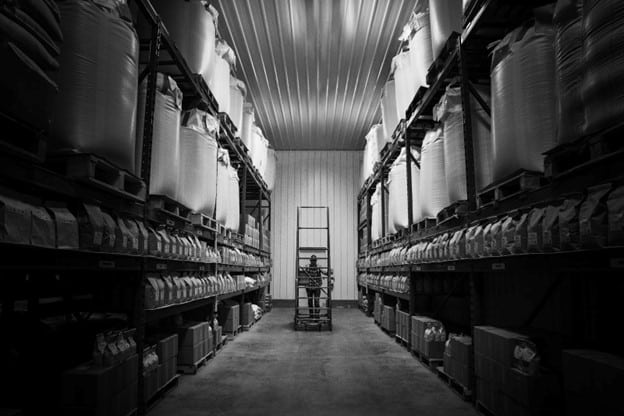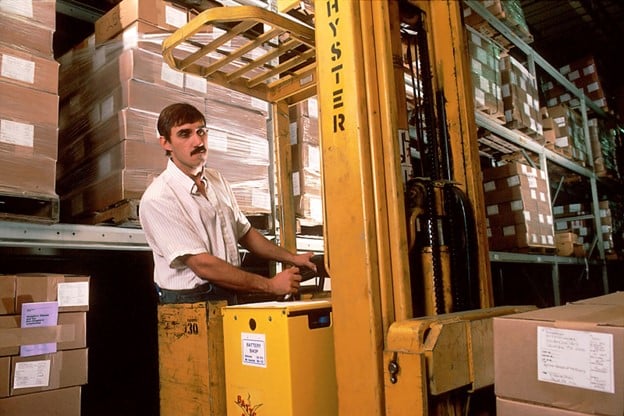You know about Amazon Warehouse Deals, but does the Amazon Warehouse return policy differ from a normal return policy?
While Amazon created a convenient shopping experience, there are downsides to online purchases. Sometimes, products don’t look as they do in pictures, or maybe the item is of lower quality than expected. All these factors will make any customer want to return an item.
The problem is sellers throw out a third of returned items, and Amazon has tightened its return policy. Their return policy still varies by the type of item, its category, and if they reduced the original pricing, such as in the case of warehouse deals.

What Are Amazon Warehouse Deals?
Before we discuss the Amazon warehouse return policy, let’s discuss the Amazon warehouse. Amazon Warehouse Deals offers certain returned items to customers. The warehouse acts as an extended marketplace, but with products available at bargain prices.
Amazon warehouse Deals is especially popular with customers looking for cheaper versions of expensive items. For example, laptops, TVs, home items, and sound systems.
But why are warehouse prices so low? Amazon Warehouse Deals comprise used, pre-owned, open-box, and refurbished items. These are still high-quality items, however. Amazon thoroughly inspects and tests each product, ensuring they’re still fit to put on the market.
Amazon will always offer a detailed description of each item, highlighting its status and any possible flaws.
Understanding the Amazon Warehouse Return Policy
Sometimes, customers will buy something from the Amazon warehouse and realize it wasn’t what they expected. But how does the Amazon warehouse return policy work?
Unlike many retailers, Amazon warehouse items aren’t final. But under the Amazon warehouse return policy, each product has different categories and tiers that can affect its return status.
Open Box and Used Items
Any item that has been lightly used or was returned in an open box has the same Amazon return policy as an unused item. Amazon’s return policy states you can return selected items within 30 days, starting from the shipment date.
Refurbished
Amazon Renewed is a part of the marketplace where they refurbish pre-owned products, ensuring they work before putting them on the market.
Certified refurbished items have a more lenient return policy. Amazon allows customers to return these products within 90 days of shipment.
Items That Can’t Be Returned
Customers can’t return certain items included in the Amazon warehouse return policy, such as large and bulky items. Here are products customers generally can’t return:
- Flammable and dangerous items
- Desktops and laptops (though they still have a 30-day return policy)
- Downloadable items (such as software)
- Products missing a serial or UPC number
- Gift cards
- Online subscriptions
- Some jewelry
- Gaming cards
- Grocery and food items
- Some beauty and health products
- Any item with shipping restrictions
Customers should also note that they can be penalized for frequently returned products.
It’s also essential to check if you purchased Amazon warehouse items from a third-party seller. In this case, the Amazon warehouse return policy doesn’t apply to that seller. You must refer to the seller’s return policy or contact them for more information.
Related content: Inside Amazon Trade In

What Does the Amazon Warehouse Return Policy Mean for Sellers?
Amazon warehouse deals affect sellers–sometimes, it leaves negative repercussions. When you sell products to the Amazon warehouse, some may have been damaged during shipping.
Since Amazon purchased and owns your products, they can resell or refurbish them in the Amazon warehouse. But if customers leave a bad review or request a refund, this can negatively impact your business.
Is there a time when Amazon is responsible for the refund? Only if the item was damaged or lost while under Amazon’s control. This can only apply if the item was in possession or handled by the fulfillment center, Amazon’s partnered carriers, or during delivery.
Third-Party Seller Return Policy
If you’re a third-party seller, you can create your return policy. Amazon will have requirements, such as a return policy equivalent to the one they offer for Prime items. But overall, handling product returns on Amazon is largely up to you.
A third-party seller can also alter the Amazon return policy if they sell their own refurbished or used items. For example, you can make your return policy stricter, limiting the return day window or the items you accept for returns.
Amazon Warehouse Return Policy Payment Types
Now that you know the basics of the Amazon warehouse return policy, customers and sellers may wonder how they will receive their payment and if they will get the entire amount.
The payment type you receive depends on the product and its condition when returned. There also may be certain fees involved, especially for sellers. Remember that Amazon will refund the original form of payment.
Always check the payment type before initiating your refund.
Full Refund
If the item isn’t as described, you’ll usually receive a full refund if you return the item within the return time frame. This is especially true if the item was damaged during transit or they sent you the wrong item.
While you must provide a reason for your return, Amazon usually gives a full refund, regardless of the reason.
Partial Refund
There are times when you can only receive a partial refund. For example, when you returned an item after the 30-day return window. The exact amount varies since Amazon will apply fees to your return (more on that in the next section).
That said, this doesn’t apply to damaged or defective items.
Additional Fees
There are times when customers or sellers may have to pay additional fees. For the most part, customers don’t have to worry about fees unless they initiate the return after the 30-day timeframe.
This also depends on the seller. For example, Amazon usually doesn’t apply fees, but third-party sellers may require you to pay shipping or restocking fees.
Amazon may also charge sellers different fees, such as a removal fee for any item they will no longer sell.
How Long Will It Take to Receive Your Refund?
Refund times are different for all customers and sellers, depending on the shipping and your payment method. Before processing your return, Amazon must receive the item from the carrier. This process usually takes about two weeks but could take as long as one month.
Once Amazon receives your item, they will initiate your refund using the original payment method. Payment processing can take three to five business days, varying from the original payment method.
If you used a credit or debit card, you’ll usually receive your refund between two and 10 business days. The exception is a prepaid credit card, which can take 30 days to process returns.
What if you no longer have the original form of payment? Or maybe you want a faster refund method? You can always opt for an Amazon gift card, which only takes a few hours to process.
Use the Amazon Warehouse Return Policy to Your Advantage
With Amazon Warehouse Deals, you can access pre-owned and refurbished products at an affordable price. These items are heavily discounted, and Amazon undergoes a strict inspection and testing process to ensure they’re suitable to list on the market.
You may be wondering what the Amazon warehouse return policy is like. Any open-box or used item has the same 30-day policy as new items, but refurbished items have a 90-day return policy. It’s important to note that third-party sellers can also set their return policy.
What if you’re a seller? Amazon can fix and sell your defective or damaged items on the warehouse marketplace. You can also opt to have Amazon reimburse you for these items, though you must pay a removal fee.
Are you launching a new business on Amazon? Understanding these small details can be difficult. Instead of starting blind, you should seek help from a team of experts for your Amazon store launch.
Click here to learn more about our services.
Author

Stephanie Jensen has been writing e-commerce content for seven years, and her copy has helped numerous stores rank on Amazon. Follow her on LinkedIn for more insight into freelance writing and creating high-quality content.



